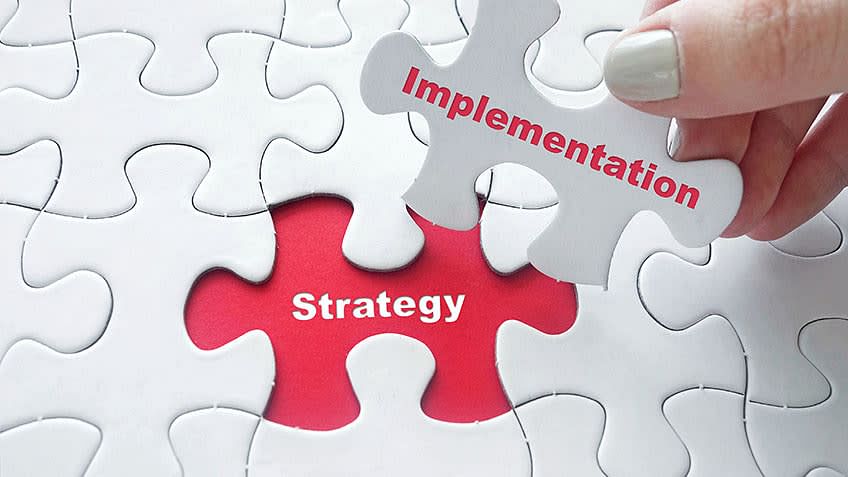
ABM in a Post-GDPR World: Compliance and Best Practices
February 6, 2024
The Ultimate Guide to Choosing the Right ABM Tool for Your Business
February 13, 2024A. Unveiling the ABM and Marketing Automation Nexus
In the ever-evolving landscape of marketing strategies, the fusion of Account-Based Marketing (ABM) with Marketing Automation Platforms marks a revolutionary alliance. ABM, a personalized and targeted approach, dovetails seamlessly with the automated precision of marketing platforms. This section navigates the genesis of ABM, the transformative journey of marketing automation, and the latent synergy between the two.
What is ABM?
Account-Based Marketing (ABM) stands as a strategic approach wherein marketing efforts are personalized for specific high-value accounts. Unlike traditional mass marketing, ABM tailors campaigns to resonate with the unique needs and characteristics of individual accounts. This precision ensures a more focused and impactful marketing strategy.
The Evolution of Marketing Automation
Marketing Automation Platforms, on the other hand, have undergone a paradigm shift over the years. Initially designed for automating repetitive tasks, these platforms now integrate sophisticated features like lead scoring, customer journey mapping, and personalized content delivery. The evolution mirrors the changing dynamics of consumer expectations and technological capabilities.
The Untapped Synergy
As marketing landscapes become more complex, the symbiosis between ABM and Marketing Automation Platforms emerges as a beacon of innovation. The combined power of targeted account-centric strategies and the efficiency of automated workflows creates a potent force. This section delves into the untapped potential of this synergy, setting the stage for a profound exploration.
B. Navigating the ABM Landscape
Navigating the ABM landscape requires a nuanced understanding of its strategies, the pivotal role of personalization, and an honest appraisal of common challenges.
Identifying ABM Strategies
ABM is not a one-size-fits-all strategy. It encompasses various approaches, including one-to-one, one-to-few, and one-to-many. Each strategy caters to different business models and goals. Delving into the nuances of these strategies provides marketers with a versatile toolkit.
The Role of Personalization
Personalization lies at the heart of ABM. It goes beyond merely addressing a contact by their first name. ABM personalization involves understanding an account’s pain points, industry challenges, and tailoring content that speaks directly to these factors. This human touch enhances engagement and builds lasting relationships.
Unmasking Common ABM Challenges
While the benefits of ABM are compelling, navigating its terrain comes with challenges. From aligning sales and marketing teams to maintaining a consistent customer experience, this section uncovers the obstacles that organizations may face. Acknowledging and addressing these challenges is crucial for a successful ABM implementation.
C. The Dawn of Integration
The integration of ABM with Marketing Automation Platforms signifies a significant shift in the marketing paradigm. This section illuminates the catalyzing role of technology, the strategic groundwork for integration, and the transformative impact on overall marketing efficiency.
A Paradigm Shift in Marketing
As the digital landscape evolves, so does the marketing paradigm. The traditional funnel model is giving way to a more cyclical approach, where personalized interactions drive engagement and conversions. Integrating ABM with Marketing Automation Platforms aligns seamlessly with this dynamic shift.
The Pivotal Role of Technology
The integration journey heavily relies on advanced technologies. Machine learning, artificial intelligence, and predictive analytics become indispensable tools for crafting personalized campaigns. This section explores how technology acts as the backbone, amplifying the capabilities of both ABM and Marketing Automation Platforms.
Setting the Stage for Integration
Successful integration requires a solid foundation. This involves not only technological readiness but also cultural alignment within the organization. Unifying the teams, ensuring a shared vision, and preparing for a collaborative workflow sets the stage for a seamless integration journey.
![]()
Understanding ABM and Marketing Automation Platforms
A. Deconstructing ABM
Understanding the core principles of ABM is essential for leveraging its potential fully. This section breaks down ABM into its fundamental components, explores the significance of hyper-personalization, and elucidates how alignment between sales and marketing is achieved.
ABM in a Nutshell
At its core, ABM is about treating individual accounts as markets of one. This section elaborates on the mindset shift required to adopt this strategy. It involves not just reaching a target audience but engaging with specific accounts as unique entities, each with its own set of challenges and opportunities.
Hyper-Personalization: The ABM Edge
Personalization has become a buzzword in marketing, but ABM takes it a step further. Hyper-personalization involves tailoring every aspect of the marketing approach to the specific needs of an account. From content and messaging to the timing of interactions, this section explores the nuances of hyper-personalization.
Aligning Sales and Marketing Efforts
One of the challenges organizations face is the misalignment between sales and marketing teams. ABM seeks to bridge this gap by fostering collaboration. By aligning efforts, breaking down silos, and sharing insights, organizations can ensure a cohesive strategy that resonates with their target accounts.
B. Demystifying Marketing Automation Platforms
The rise of Marketing Automation Platforms has transformed the way marketers operate. This section demystifies these platforms, providing insights into the automation revolution, a glimpse into the tools available, and how they enhance efficiency and scalability.
The Automation Revolution
Marketing Automation Platforms automate repetitive tasks, allowing marketers to focus on strategic activities. From email campaigns to lead nurturing, this section delves into how automation streamlines workflows, reduces manual effort, and ensures consistency in marketing efforts.
A Glimpse into Automation Tools
The arsenal of tools within Marketing Automation Platforms is diverse. From CRM integration to lead scoring and analytics, understanding the functionalities of these tools is crucial. This section provides a comprehensive overview of the tools available and their specific contributions to the marketing process.
Enhancing Efficiency and Scalability
Efficiency and scalability are the hallmarks of Marketing Automation Platforms. By automating tasks that would be time-consuming manually, marketers can scale their efforts without compromising quality. This section explores how automation contributes to efficiency and scalability, paving the way for more impactful campaigns.
C. The Overlapping Realm
The true magic happens when ABM and Marketing Automation Platforms converge. This section uncovers the overlapping objectives, the bridge that integration builds, and how a unified customer journey is crafted through this symbiotic alliance.
Identifying Shared Objectives
While ABM and Marketing Automation Platforms have distinct functionalities, they share common objectives. Both aim to enhance customer experience, drive engagement, and ultimately boost conversions. This section highlights the alignment of goals that makes integration a natural progression.
Bridging Gaps with Integration
Integration addresses the historical gap between personalized strategies and automated execution. By seamlessly connecting ABM with Marketing Automation Platforms, organizations bridge the divide, ensuring that personalized content and interactions are delivered at scale. This section explores the mechanics of this bridge-building process.
Crafting a Unified Customer Journey
The modern customer journey is intricate, involving multiple touchpoints across various channels. ABM and Marketing Automation Platforms, when integrated, create a unified experience for the customer. This section elucidates how the integration ensures a cohesive and seamless journey, from the first touchpoint to conversion and beyond.

Benefits of the Symbiotic Alliance
A. Turbocharging Targeted Marketing
The synergy between ABM and Marketing Automation Platforms unlocks a plethora of benefits, foremost among them being the turbocharging of targeted marketing efforts.
Precision Targeting with ABM
ABM’s essence lies in its ability to precisely target high-value accounts. By tailoring campaigns to resonate with the unique needs and pain points of specific accounts, marketers can cut through the noise and directly address the concerns that matter most to their audience. This section delves into the art of precision targeting and its impact on engagement.
The Scalability Factor
While precision is critical, scalability ensures that these personalized efforts can be extended to a broader audience. Marketing Automation Platforms play a pivotal role in scaling ABM strategies, automating processes, and enabling marketers to reach a larger number of targeted accounts without sacrificing the personal touch. This section explores how scalability becomes a force multiplier in the ABM and marketing automation integration.
Streamlining Communication Channels
Effective communication is the lifeblood of marketing. ABM, coupled with Marketing Automation Platforms, streamlines communication channels by ensuring consistent and personalized messaging across various touchpoints. From email campaigns to social media interactions, this section illustrates how the integration optimizes communication, fostering meaningful engagements with the target audience.
B. Amplifying Lead Generation
The symbiotic alliance between ABM and Marketing Automation Platforms is a potent catalyst for lead generation, transforming prospects into enduring partnerships.
From Prospects to Partners
Traditional lead generation models often cast a wide net, capturing numerous prospects without a clear understanding of their value. ABM shifts this paradigm by focusing on high-value accounts from the outset. Integrating Marketing Automation Platforms refines this process, automating lead nurturing and guiding prospects through a personalized journey. This section explores how the alliance converts mere prospects into long-term partners.
The Power of Automated Nurturing
Nurturing leads requires a delicate touch, understanding their needs, and providing relevant content at every stage of the buyer’s journey. Marketing Automation Platforms excel at this, automating the delivery of personalized content based on prospect behavior. ABM complements this by ensuring the content is precisely tailored to each account’s specific requirements. Together, they form a dynamic duo that nurtures leads effectively.
ABM’s Impact on Conversion Rates
Conversion rates are the ultimate barometer of marketing success. The integration of ABM and Marketing Automation Platforms not only enhances lead quality but also optimizes the conversion process. By aligning personalized strategies with automated workflows, marketers can guide accounts seamlessly through the conversion funnel. This section examines how the symbiotic alliance positively impacts conversion rates, driving tangible results.
C. Driving ROI and Revenue Growth
The proof of any marketing strategy lies in its ability to drive return on investment (ROI) and sustainable revenue growth. The ABM and Marketing Automation Platforms integration sets the stage for quantifiable success.
Quantifying Success: A Holistic Approach
Traditional marketing metrics often fall short in capturing the true impact of strategies. The integration of ABM with Marketing Automation Platforms allows for a more holistic approach to measuring success. From engagement rates to customer lifetime value, this section explores the diverse metrics that paint a comprehensive picture of ROI.
Balancing Short-Term Wins and Long-Term Value
While immediate wins are gratifying, sustainable success requires a focus on long-term value. ABM’s emphasis on building lasting relationships aligns seamlessly with Marketing Automation Platforms’ ability to nurture over time. This section delves into the delicate balance between short-term wins and the enduring value that contributes to sustained revenue growth.
Unleashing the Full Potential
The symbiotic alliance between ABM and Marketing Automation Platforms transcends traditional marketing strategies, unlocking the full potential of marketing endeavors. By aligning targeted efforts with automated efficiency, organizations can not only achieve immediate results but also lay the groundwork for sustained growth and profitability. This section illuminates the transformative impact of the integration on overall ROI and revenue growth.

Implementation Strategies
A. Crafting a Seamless Integration Plan
Implementing the integration of ABM with Marketing Automation Platforms requires meticulous planning and execution. This section delves into the crucial steps involved in crafting a seamless integration plan.
Assessing Technological Compatibility
The success of integration hinges on the compatibility of existing technologies. Before embarking on the integration journey, organizations must assess the technological landscape, identifying gaps and ensuring that the selected Marketing Automation Platforms align seamlessly with their existing infrastructure. This section outlines the critical considerations for technological compatibility.
Team Alignment: The Human Element
While technology plays a significant role, the human element is equally vital in successful integration. Aligning sales and marketing teams, breaking down silos, and fostering a collaborative culture are paramount. This section explores strategies for ensuring team alignment, emphasizing the importance of a united front in the integration process.
The Phased Approach to Integration
Rome wasn’t built in a day, and neither should the integration of ABM with Marketing Automation Platforms. A phased approach allows organizations to gradually acclimate to the changes, minimizing disruption while maximizing the benefits. This section outlines the key phases of integration, providing a roadmap for a smooth and effective implementation.
B. Leveraging Data for Intelligent Campaigns
Data is the lifeblood of effective marketing. Leveraging data intelligently is crucial for personalization and campaign success. This section explores how organizations can harness the power of data to craft intelligent campaigns within the integrated framework.
Harnessing Data for Personalization
ABM’s success hinges on the depth of personalization, and data is the key enabler. This section delves into the strategies for collecting, analyzing, and leveraging data to create highly personalized campaigns. From understanding account behavior to predicting future needs, data becomes the linchpin for intelligent personalization.
The Role of Predictive Analytics
Predictive analytics takes data utilization a step further, empowering organizations to anticipate future trends and behaviors. This section explores how predictive analytics within Marketing Automation Platforms can be integrated into ABM strategies, enabling proactive decision-making and campaign optimization.
Data-Driven Decision Making
In the integrated realm of ABM and Marketing Automation Platforms, decisions are no longer based on intuition alone. Data-driven decision-making becomes the norm, guiding marketers to refine strategies based on real-time insights. This section emphasizes the importance of a data-driven mindset and outlines how it contributes to intelligent and adaptive campaign management.
C. Choosing the Right Tools
The success of integration depends on selecting the right tools that align with organizational goals and enhance efficiency. This section provides insights into the criteria for choosing integration-friendly platforms and highlights the features that contribute to scalability and long-term success.
Exploring Integration-Friendly Platforms
Not all Marketing Automation Platforms are created equal when it comes to integration. This section explores the landscape of integration-friendly platforms, examining their compatibility with ABM strategies and their ability to seamlessly integrate into existing marketing ecosystems.
Evaluating Features and Scalability
Beyond compatibility, the features offered by Marketing Automation Platforms play a pivotal role. This section delves into the essential features that organizations should prioritize, from robust automation capabilities to scalability for future growth. Evaluating these features ensures that the chosen tools align with the strategic objectives of the integrated approach.
Ensuring Future-Proof Solutions
The integration journey is an investment in the future, and as such, organizations must prioritize future-proof solutions. This section explores how selecting tools with an eye on technological advancements and industry trends ensures that the integration remains relevant and effective in the long run.

Challenges and Mitigations
A. Overcoming Integration Hurdles
While the integration of ABM with Marketing Automation Platforms offers immense benefits, it is not without challenges. This section explores common hurdles organizations might face and provides strategies for overcoming them.
Technological Roadblocks
Integration often encounters resistance from existing technological infrastructures. Legacy systems, incompatible tools, or outdated software can impede the seamless collaboration between ABM and Marketing Automation Platforms. Strategies for overcoming these roadblocks include conducting a comprehensive technology audit, investing in interoperable solutions, and implementing phased integrations to minimize disruptions.
Cultural Shifts and Resistance
The integration journey isn’t solely a technological one; it’s also a cultural shift. Resistance to change, siloed mindsets, and departmental turf wars can hinder the alignment needed for successful integration. This section explores strategies for fostering a culture of collaboration, emphasizing the importance of change management, and showcasing success stories of organizations that navigated these cultural challenges effectively.
Strategies for Smoothing the Transition
Transition periods can be tumultuous. This section provides actionable strategies for organizations to smooth the integration transition. From conducting thorough training programs to creating open communication channels, these strategies aim to mitigate the potential disruption and resistance that often accompanies significant organizational change.
B. Data Security and Compliance
As the integration journey relies heavily on data, ensuring its security and compliance with regulations becomes paramount. This section delves into the potential risks associated with data-driven campaigns and provides strategies for safeguarding customer information.
Safeguarding Customer Information
With great data comes great responsibility. This section explores strategies for safeguarding customer information throughout the integration process. From robust encryption methods to secure data storage, organizations must prioritize the security of the valuable data driving their personalized campaigns.
Complying with Regulations
Data privacy regulations, such as GDPR and CCPA, impose stringent requirements on how organizations handle customer data. This section outlines the compliance considerations organizations must address during the integration of ABM and Marketing Automation Platforms. Failure to adhere to these regulations not only poses legal risks but also erodes customer trust.
Balancing Personalization and Privacy
The delicate balance between personalization and privacy is a tightrope walk. This section provides insights into how organizations can strike this balance effectively. From transparent communication about data usage to giving customers control over their preferences, maintaining this equilibrium is crucial for building trust.
C. Continuous Improvement: The Agile Approach
Integration is not a one-and-done process; it’s an ongoing journey of continuous improvement. This section explores the agile approach to integration, emphasizing the importance of adaptability, iterative optimization, and staying ahead in a dynamic marketing landscape.
Embracing a Culture of Adaptability
The integration landscape is dynamic, with technologies evolving and customer expectations shifting. Organizations must embrace a culture of adaptability, fostering a mindset that welcomes change and continuous improvement. This section provides strategies for instilling this culture within teams.
The Iterative Process of Optimization
Integration isn’t about reaching a static endpoint; it’s about continual refinement. This section explores the iterative process of optimization, where organizations analyze data, gather insights, and make informed adjustments to enhance the effectiveness of their integrated strategies.
Staying Ahead in a Dynamic Landscape
The marketing landscape is ever-evolving, and organizations must stay ahead of the curve to remain competitive. This section discusses strategies for staying informed about emerging technologies, industry trends, and customer preferences. By anticipating changes, organizations can proactively adapt their integrated strategies for sustained success.

Future Trends and Innovations
A. The Road Ahead
The integration of ABM with Marketing Automation Platforms is not the final destination but a stepping stone into the future. This section explores the road ahead, offering insights into emerging trends and innovations that will shape the next phase of integrated marketing strategies.
Predictive Personalization: What’s Next?
As technology advances, the future of personalization lies in predictive analytics. This section delves into how organizations can leverage predictive personalization to anticipate customer needs, delivering tailored content before the customer even realizes they need it.
AI and Machine Learning in ABM
Artificial Intelligence (AI) and Machine Learning (ML) are becoming increasingly integral to marketing strategies. This section explores how AI and ML can enhance the capabilities of ABM and Marketing Automation Platforms, automating decision-making processes and further refining personalized campaigns.
Emerging Technologies on the Horizon
The future is brimming with possibilities. This section provides a glimpse into the emerging technologies on the horizon that will impact integrated marketing. From augmented reality to blockchain, understanding these technologies allows organizations to prepare for the next wave of innovation.
B. The Evolution of Customer Expectations
As technology evolves, so do customer expectations. This section explores how the integration of ABM and Marketing Automation Platforms must align with the evolving expectations of the modern consumer.
Shaping Future Campaigns
Customers expect more than ever before. This section explores how the integration must adapt to shape future campaigns that meet the heightened expectations of a digitally savvy and demanding audience.
The Era of Hyper-Relevance
Hyper-relevance is the next frontier in customer engagement. This section delves into how organizations can achieve hyper-relevance by fine-tuning their integrated strategies to deliver content and experiences that are not just personalized but hyper-personalized.
Adapting to Dynamic Consumer Needs
Consumer needs are dynamic, influenced by societal changes, technological advancements, and global events. This section provides strategies for organizations to stay nimble, adapting their integrated strategies to meet the ever-changing needs and expectations of their target audience.
C. The Uncharted Territories
The integration of ABM with Marketing Automation Platforms opens doors to uncharted territories in the marketing landscape. This section explores the possibilities beyond conventional boundaries, from globalizing integrated strategies to incorporating cultural sensitivity into personalized campaigns.
Beyond Conventional Boundaries
This section challenges organizations to think beyond traditional marketing boundaries. From exploring untapped markets to reaching new demographics, the integration of ABM and Marketing Automation Platforms allows for a foray into uncharted territories.
Globalization and Cultural Sensitivity
As integrated strategies expand globally, organizations must navigate cultural nuances. This section provides insights into how organizations can infuse cultural sensitivity into their campaigns, ensuring that personalized content resonates positively across diverse cultural landscapes.
The Role of ABM in New Marketing Frontiers
ABM’s role extends beyond the known territories of marketing. This section explores how ABM can be a guiding force in venturing into new marketing frontiers, from experimental channels to unconventional approaches that push the boundaries of personalized engagement.
Conclusion
A. The Unstoppable Force of Integration
As we conclude this exploration, the integration of ABM with Marketing Automation Platforms emerges as an unstoppable force in the marketing realm. The symbiotic alliance not only addresses current marketing challenges but propels organizations into a future where personalized, automated, and integrated strategies redefine the landscape.
Recapitulating the ABM and Marketing Automation Symphony
In this concluding section, we revisit the key symphony created by the integration of ABM and Marketing Automation Platforms. The harmony of personalized targeting, automated efficiency, and continuous improvement sets the stage for an ongoing marketing performance that resonates with audiences.
The Future Awaits: Embrace the Symbiotic Alliance
The future is dynamic and full of possibilities. As organizations embrace the symbiotic alliance of ABM and Marketing Automation Platforms, they position themselves not only to thrive in the present but to lead the charge into the future of marketing innovation.


